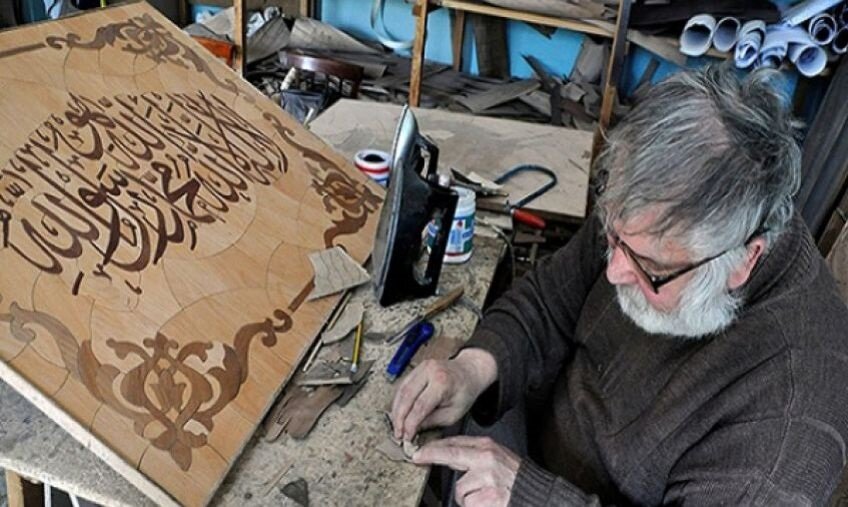Iranian handicrafts: Marquetry

TEHRAN – Marquetry is termed "Mo’araq" in Persian, which literally means "an object with veins". In terms of handicrafts, Mo’araq is a form of art in which colorful pieces of wood are cut and arranged next to each other on a wooden or polyester background.
A variety of woods are used to make marquetry, from seventy to eighty species, with a variety of colors, and sometimes camel bone, seashells, copper, brass, silver, gold, and ivory are incorporated to create a very beautiful material.
In Iran, it was believed that marquetry was practiced from 90 years ago, however, a wooden comb found recently in "Shahr-e Sukhteh" proves the craft dates back thousands of years. Wood pieces were cut and attached to the handle using tree gum to make the comb’s handle.
One of the many examples of marquetry is the stand for Holy Quran at the Metropolitan Art Museum. This piece dates back to the 15th century and is made from carved wood, latticework, and inlaid veneers.
Inlay is a technique used in early marquetry, which is created by cutting out parts of the background based on the design and by using tools such as chisels. The cut areas then receive sections of a different material such as wood, ivory, bone, or seashells.
Additionally, several more elaborate designs were applied on door inlays and boxes during the Safavid dynasty. During the same period, there was also another kind of marquetry in which pieces of wood, bone, and layers of "Khatam" (an ancient Persian technique of inlaying) were attached to each other.
Over time, marquetry has undergone many changes. When it was first designed, it was based on arabesque patterns and used only five limited woods: ebony, silverberry, pear, and areca.
Marquetry was primarily used to decorate the tops of tables, cabinets, doors, backs of chairs, mirror frames, and chessboards. Currently, this beautiful craft is used to create elegant tableaus in addition to making useful objects.
A wide variety of wood types have been incorporated into marquetry products since the 1950s due to advances in the understanding of wood.
Nowadays marquetry is practiced in many cities and provinces of the country.
ABU/MG
